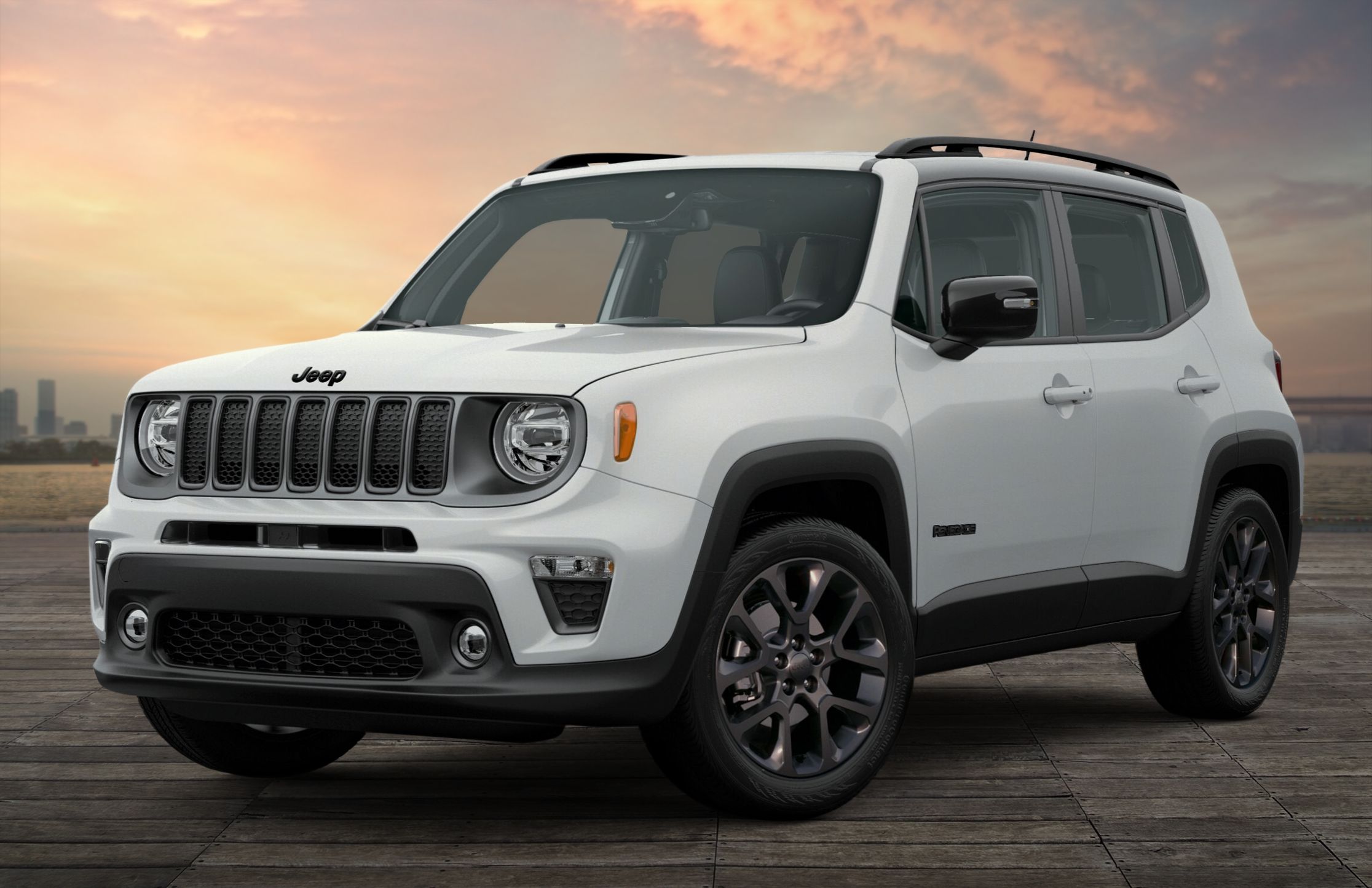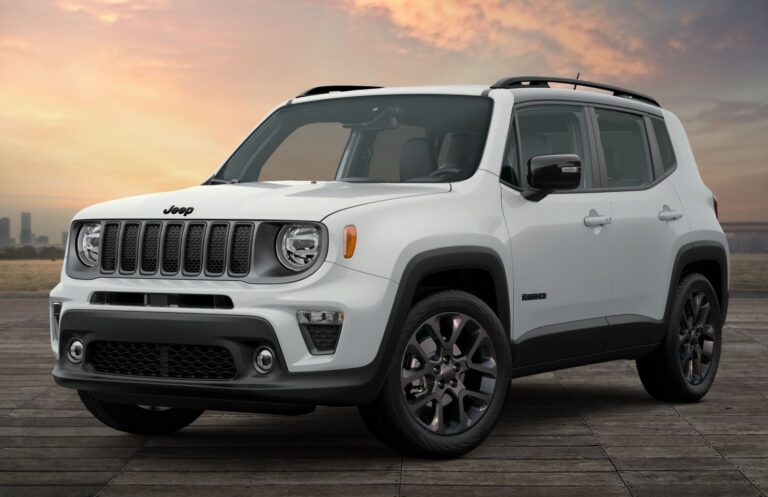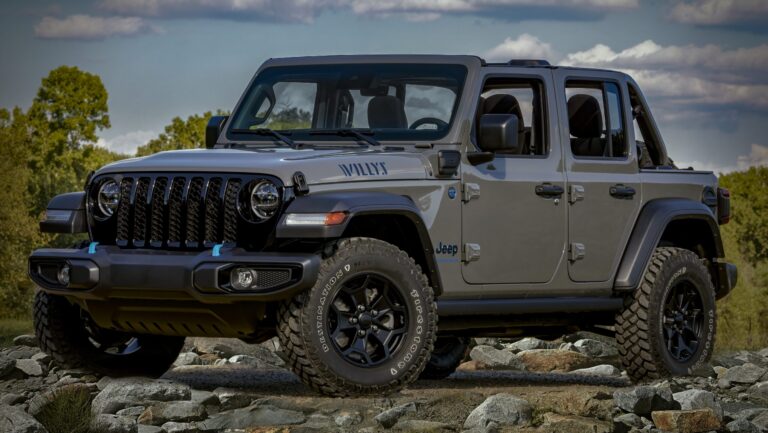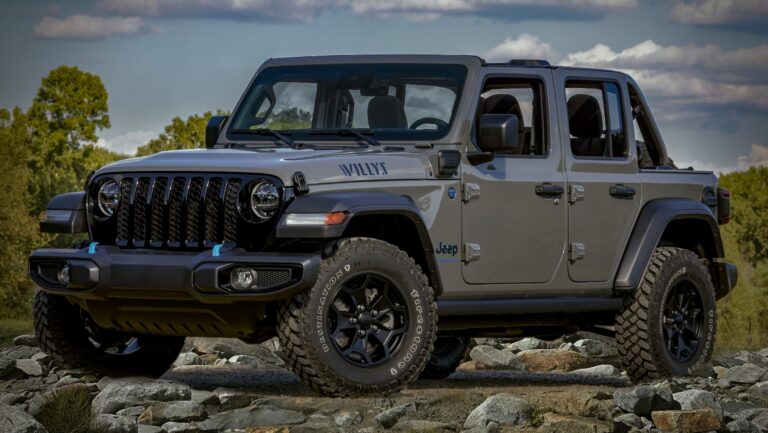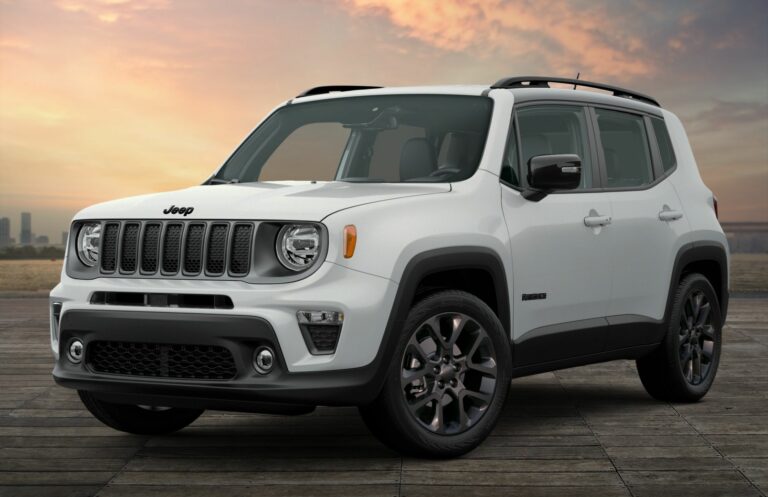Jeep Comanche Trucks For Sale: A Comprehensive Guide to Finding Your Classic Workhorse
Jeep Comanche Trucks For Sale: A Comprehensive Guide to Finding Your Classic Workhorse jeeps.truckstrend.com
In the pantheon of iconic American vehicles, few blend rugged utility with genuine off-road prowess as uniquely as the Jeep Comanche. Produced for a relatively short period from 1986 to 1992, the Comanche (designated MJ) was Jeep’s venture into the compact pickup truck market, built on the highly successful XJ Cherokee platform. More than just a pickup, it was a true Jeep, inheriting the solid axles, durable powertrains, and legendary 4×4 capability that defined the brand. Today, finding a Jeep Comanche for sale isn’t just about acquiring a vehicle; it’s about investing in a piece of automotive history, a versatile workhorse, and a burgeoning classic that continues to captivate enthusiasts and collectors alike. This guide will delve into everything you need to know about navigating the market for these distinctive trucks.
The Enduring Legacy of the Jeep Comanche
Jeep Comanche Trucks For Sale: A Comprehensive Guide to Finding Your Classic Workhorse
The story of the Jeep Comanche began in the mid-1980s, a time when compact trucks were gaining immense popularity. American Motors Corporation (AMC), then owner of Jeep, saw an opportunity to capitalize on the success of its XJ Cherokee SUV by developing a pickup variant. Launched in 1986, the Comanche shared its unibody front clip with the Cherokee but featured a traditional body-on-frame rear section with a separate bed. This unique hybrid construction offered the comfortable ride and handling of the Cherokee up front, combined with the load-carrying capability and ruggedness of a traditional pickup truck.
Available with various engine options, including the torquey 4.0-liter inline-six that would become synonymous with Jeep’s reliability, and offered in both two-wheel-drive and formidable four-wheel-drive configurations, the Comanche quickly earned a reputation for its toughness and versatility. Despite its merits, production ceased in 1992, primarily due to Chrysler’s acquisition of AMC and an internal decision to focus on the Dodge Dakota. This limited production run, coupled with its robust design and off-road heritage, has solidified the Comanche’s status as a sought-after classic in the years since.
Why a Jeep Comanche Still Makes Sense Today
The allure of the Jeep Comanche goes far beyond nostalgia. For many, it represents a perfect blend of old-school simplicity and enduring capability.
- Classic Appeal & Collectibility: The Comanche’s unique design and relatively short production run make it a distinctive sight on the road. Its appreciation as a classic is growing, making well-maintained examples increasingly desirable.
- Rugged Durability: Built on the XJ Cherokee’s robust foundation, Comanches are renowned for their strength and longevity. The 4.0L engine, in particular, is legendary for its reliability, often reaching hundreds of thousands of miles with proper maintenance.
- Off-Road Prowess: True to its Jeep lineage, the Comanche excels off-road. With solid axles, good ground clearance, and various 4×4 systems, it can tackle trails that would leave many modern trucks stranded.
- Practicality and Utility: Despite its compact size, the Comanche offers a practical truck bed (available in 6-foot or 7-foot lengths) for hauling, while remaining maneuverable enough for city driving and tight trails.
- Modifiability and Aftermarket Support: Sharing many components with the ubiquitous XJ Cherokee means a vast aftermarket exists for upgrades, lifts, and performance parts, allowing owners to customize their Comanche to their specific needs.
- Simplicity of Maintenance: Compared to modern, electronics-laden vehicles, the Comanche is mechanically straightforward, making it more accessible for DIY repairs and less costly to maintain.

Key Considerations When Shopping for a Jeep Comanche

Finding the right Jeep Comanche requires a discerning eye and an understanding of what to look for. These trucks are decades old, and their condition will vary wildly.
Rust: The Silent Killer
The most significant enemy of any older vehicle, especially a truck, is rust. Comanches are particularly susceptible in several areas:
- Frame Rails: Especially where the unibody meets the frame at the rear.
- Floorboards and Rocker Panels: Common areas for corrosion.
- Bed and Bed Supports: Check for rust in the bed itself and underneath where it connects to the frame.
- Fenders and Wheel Wells: Look for bubbling paint or perforations.
Thoroughly inspect the entire underside, paying close attention to structural integrity.

Engine Options
The Comanche offered several engines throughout its production, but the 4.0-liter inline-six is the most sought-after:
- 2.5L AMC I4 (1986-1992): Decent for light duty, but often underpowered.
- 2.8L GM V6 (1986): Only available in the first year, generally considered problematic and underpowered. Avoid if possible.
- 2.1L Renault Diesel I4 (1986-1987): Rare and parts are extremely difficult to find.
- 4.0L AMC I6 (1987-1990 Renix; 1991-1992 HO): The gold standard. The Renix (pre-1991) is known for its robust mechanicals but has a simpler fuel injection system. The High Output (HO) 4.0L from 1991-1992 offers more horsepower and a more advanced fuel injection system, making it slightly more desirable for performance. Both are incredibly reliable.
Transmission and Drivetrain
- Manual Transmissions: AX-4 (4-speed, 2.5L), AX-5 (5-speed, 2.5L), AX-15 (5-speed, 4.0L). The AX-15 is a robust and popular choice.
- Automatic Transmission: AW4 (4-speed automatic, 4.0L). A very durable and reliable automatic transmission.
- 4×4 Systems: Most Comanches were available with 4WD. Look for either the Command-Trac (part-time 4WD, ideal for off-road) or Selec-Trac (full-time 4WD, usable on pavement).
Trim Levels
Comanches came in various trim levels, influencing features and desirability: Pioneer, Chief, Sportruck, Eliminator, and Laredo. The Eliminator and Laredo trims typically offered more amenities and stylistic upgrades.
Overall Condition and Documentation
Beyond mechanicals and rust, assess the overall condition of the interior, body panels, and electrical system. Ask for service records and a clear title. A well-documented history can be a significant indicator of a well-cared-for vehicle.
Where to Find Jeep Comanche Trucks For Sale
The search for a Comanche can be a treasure hunt. Here are the most common avenues:
- Online Marketplaces: Websites like eBay Motors, Craigslist, and Facebook Marketplace are primary hunting grounds. Be prepared to filter through many listings and be wary of scams.
- Specialized Forums & Clubs: The Comanche Club forum (comancheclub.com) and various Jeep Cherokee/Comanche Facebook groups are invaluable resources. Members often sell their trucks or know of others for sale, and you can get direct advice.
- Classic Car Dealerships & Auctions: Less common, but some specialized dealers or online auctions (like Bring a Trailer for high-end examples) might list a Comanche. Prices here will likely be higher.
- Word of Mouth: Let friends, family, and local mechanics know you’re looking. Sometimes the best deals are found through personal connections.
The Buying Process: Tips for a Successful Purchase
Once you’ve identified a potential Comanche, follow these steps to ensure a wise investment:
- Research Thoroughly: Understand the specific year, engine, transmission, and trim level you’re looking at. Know common issues for that model year.
- Ask Detailed Questions: Before even seeing the truck, ask about its history, maintenance, rust, and any known problems. Request detailed photos and videos.
- Pre-Purchase Inspection (PPI): This is non-negotiable. If possible, have a qualified mechanic (preferably one familiar with older Jeeps) perform a thorough inspection. This can uncover hidden issues and save you thousands in future repairs.
- Test Drive: Don’t just drive it around the block. Take it on various roads – highway, city, and if possible, some rough terrain. Listen for strange noises, check the steering, brakes, suspension, and ensure the transmission shifts smoothly (both manual and automatic). Test the 4WD system if applicable.
- Negotiate Wisely: Be prepared to negotiate, especially if the inspection uncovers issues. Use any identified problems as leverage.
- Budget Beyond Purchase Price: Factor in insurance, registration, potential immediate repairs (even on a "good" truck), and any desired modifications.
- Beware of "Franken-Jeeps": Some Comanches have been heavily modified, often with mismatched or poorly installed parts. While modifications can be a plus, ensure they were done professionally and don’t compromise safety or reliability.
Potential Challenges and Solutions
Owning an older vehicle like a Comanche comes with its unique set of challenges, but most have viable solutions.
- Parts Availability: While many mechanical parts are shared with the XJ Cherokee (making them widely available), unique Comanche body panels, bed components, and some interior trim pieces can be scarce.
- Solution: Join online forums and clubs; members often know where to source rare parts or have spares. Aftermarket reproduction parts are also becoming more common. Junkyards can be a goldmine.
- Fuel Economy: The 4.0L engine, while reliable, is not known for its fuel efficiency. Expect around 15-20 MPG at best.
- Solution: Accept it as part of owning a classic truck. Regular maintenance can optimize what efficiency is available.
- Safety Features: Comanches lack modern safety features like airbags, ABS, and advanced driver-assist systems.
- Solution: Drive defensively, ensure brakes are in excellent condition, and consider upgrading lighting for better visibility.
- Finding a Good Example: Many Comanches have been used hard, neglected, or heavily modified by previous owners.
- Solution: Patience is key. Be prepared to travel to inspect vehicles. Don’t settle for the first one you see. A thorough PPI is your best defense against a money pit.
Jeep Comanche Trucks For Sale: Estimated Price Guide
The price of a Jeep Comanche varies significantly based on its condition, mileage, engine, drivetrain (2WD vs. 4WD), and geographic location. This table provides a general estimate:
| Condition Category | Description | Estimated Price Range (USD) |
|---|---|---|
| Project | Non-running, major mechanical issues, significant rust, incomplete, needs full restoration. | $1,000 – $3,500 |
| Fair | Running but needs significant mechanical work, noticeable rust/body damage, worn interior, suitable for a dedicated DIY enthusiast. | $3,500 – $7,000 |
| Good | Running and driving well, minor mechanical issues, some surface rust but no major structural rust, decent interior, presentable. | $7,000 – $15,000 |
| Excellent | Well-maintained, minimal to no rust, strong running engine/transmission, clean interior, minor cosmetic flaws, ready to drive. | $15,000 – $25,000 |
| Restored/Show | Professionally restored or exceptionally well-preserved original condition, potentially low mileage, pristine inside and out. | $25,000+ |
Note: Prices are estimates and can fluctuate based on market demand, specific features (e.g., 4.0L HO, 4×4, rare trim), and seller urgency. Always factor in inspection costs and potential immediate repairs.
Frequently Asked Questions (FAQ) about Jeep Comanche Trucks
Q1: How rare are Jeep Comanches?
A1: While not as rare as some limited-production vehicles, they are increasingly uncommon. Only around 190,000 were produced over seven years, and many have succumbed to rust or neglect. Finding a well-preserved, unmolested example is becoming genuinely rare.
Q2: What’s the best engine for a Comanche?
A2: The 4.0-liter inline-six (especially the 1991-1992 High Output version) is overwhelmingly considered the best. It offers a great balance of power, torque, and legendary reliability, making it the most desirable and easiest to maintain.
Q3: Are parts hard to find for a Jeep Comanche?
A3: Mechanical parts, especially for the engine, transmission, and drivetrain, are generally easy to find due to shared components with the highly popular XJ Cherokee. However, unique body panels (like the bed), specific interior trim, and some exterior pieces are much harder to source and may require specialized searching or reproduction parts.
Q4: Can I use XJ Cherokee parts on a Comanche?
A4: Yes, absolutely! The Comanche shares its entire front clip, interior, and most mechanical components (engine, transmission, transfer case, front axle, steering, suspension) with the XJ Cherokee. This interchangeability is a massive advantage for Comanche owners regarding parts availability and aftermarket support.
Q5: What should I specifically look for regarding rust on a Comanche?
A5: Prioritize checking the rear frame rails where they meet the unibody, the floorboards (especially under the carpets), the rocker panels, and the bed supports. Also, inspect the front fenders, wheel wells, and door bottoms.
Q6: Are Comanches good daily drivers?
A6: A well-maintained Comanche with the 4.0L engine and automatic transmission can certainly serve as a daily driver. They offer a comfortable ride for a truck of their era and are reliable. However, be prepared for lower fuel economy and fewer modern amenities/safety features compared to contemporary vehicles.
Q7: What’s the typical fuel economy for a 4.0L Comanche?
A7: Expect around 15-18 miles per gallon (MPG) combined for a 4.0L 4×4 model, depending on driving style, tire size, and maintenance. 2WD models might see slightly better figures.
Conclusion
The Jeep Comanche stands as a testament to Jeep’s enduring design philosophy: rugged, capable, and undeniably cool. For those seeking a vehicle that blends classic utility with off-road heritage, the Comanche offers a compelling proposition. While the search for a well-preserved example requires patience and diligence, the reward of owning this unique and versatile truck is immense. From weekend adventures to practical hauling, a Comanche is more than just a truck for sale; it’s an invitation to join a passionate community and experience a piece of Jeep history that continues to prove its worth, decades after rolling off the assembly line.

